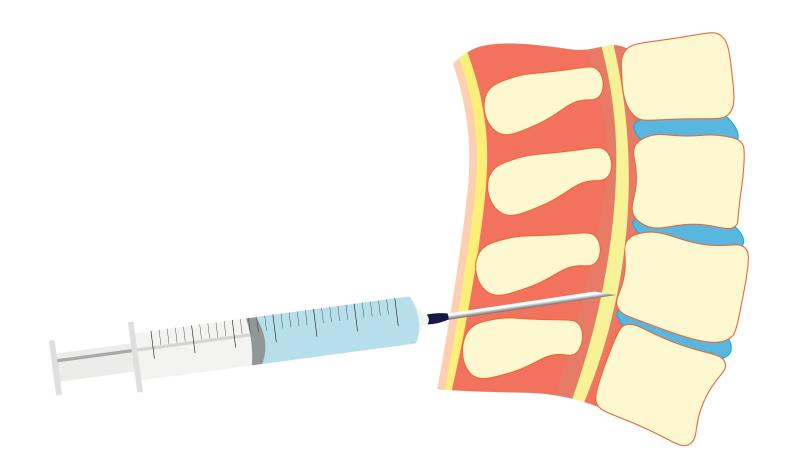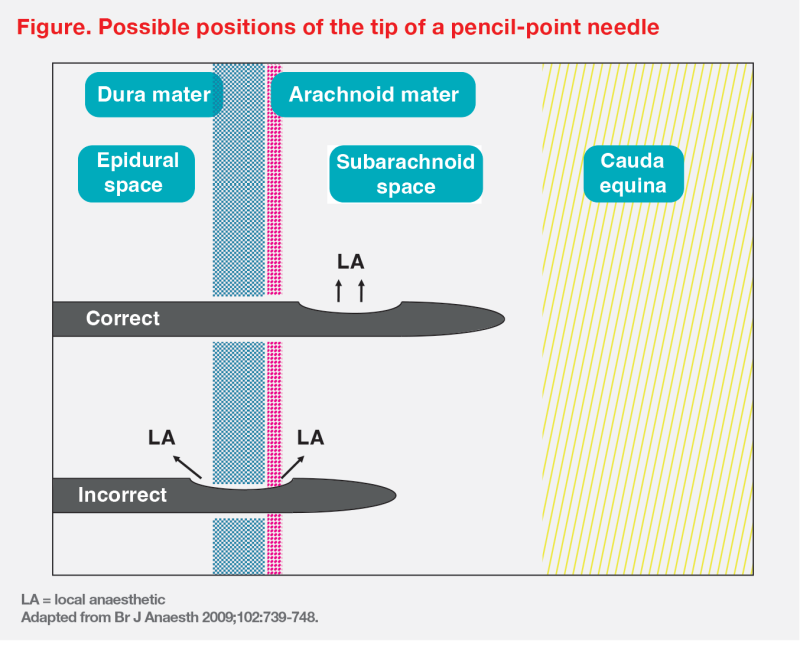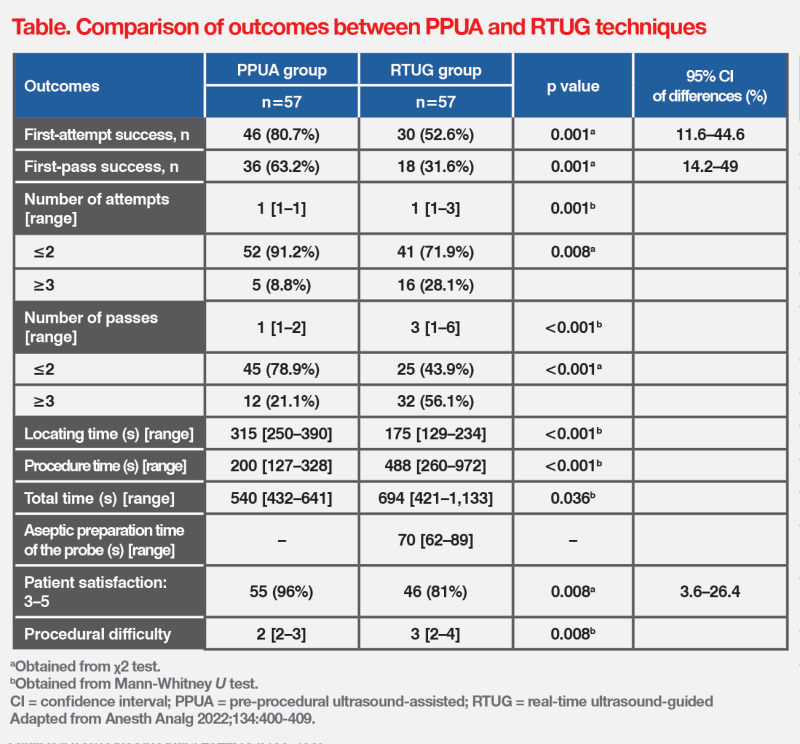Failed spinal anaesthesia: Reasons, prevention and management





In an interview with MIMS Doctor, Professor Ki-Jinn Chin of the Department of Anesthesiology and Pain Medicine at University of Toronto, Toronto, Ontario, Canada, discusses potential reasons behind failed spinal anaesthesia, suggests possible ways of maximizing its success rate, and offers tips on how to manage complications.
Spinal anaesthesia (SA) is the most commonly performed regional anaesthetic procedure that offers a range of advantages over general anaesthesia (GA). For instance, when used instead of GA for surgeries such as hip and knee arthroplasty, SA is associated with lower risks of pulmonary and renal complications, venous thrombosis, and blood transfusion. [BJA Educ 2024;24:46-56]
Although widely used and viewed as one of the most reliable regional block methods, SA has a reported failure rate of 1–17 percent. [Br J Anaesth 2009;102:739-748] “Various errors can occur during SA, and when a block fails, it is a lot more likely to be due to a flaw in technique rather than a problem with local anaesthetic [LA] potency,” said Chin.
Primary and secondary failure
“Unsuccessful SA can be divided into two broad categories: primary failure, which happens due to technical reasons, namely failed lumbar puncture, and secondary or therapeutic failure, which is failure to achieve an adequate sensory or motor block despite apparently successful delivery of LA,” Chin explained.
Failed lumbar puncture
Failed lumbar puncture manifests as inability to obtain cerebrospinal fluid (CSF) and should be immediately obvious. Apart from rare cases of needle lumen obstruction or low CSF pressure (the “dry tap”), failed lumbar puncture almost always results from inability to enter the vertebral canal, due to either challenging spinal anatomy in the patient or suboptimal needle insertion technique.
Needle insertion
Before puncture, the lumbar laminae and spinous processes should be maximally separated if possible by flexing the whole spine, the hips, and knees, while rotation and lateral curvature of the spine should be avoided. The traditional site for lumbar puncture is in the midline between the spinous processes of the third and fourth lumbar vertebrae. Needle insertion should start perpendicular to the skin in both planes and be advanced with careful attention to tactile feedback from the needle tip. Fine adjustments to the needle angle, usually in a cranial direction, may be required if obstruction is encountered. Spatial knowledge of vertebral anatomy and a mental image of needle tip location will assist interpretation of tactile feedback from the needle and guide alterations in needle trajectory. [Br J Anaesth 2009;102:739-748]
Challenging anatomy and other patient factors
Abnormalities of the spine (eg, scoliosis, calcification of ligaments, degenerative changes of ageing, previous spinal surgery), obesity, and patient anxiety make both positioning the patient and needle insertion more difficult. [BJA Educ 2024;24:46-56] For instance, accurate localization of the spinous processes by palpation may be difficult in obese patients, while challenges in scoliotic patients include narrowed interspinous spaces and rotational deformity. A calm and relaxed patient is more likely to assume and maintain the correct position, so gentle, unhurried handling and talking the patient through the procedure explanation are vital. [Br J Anaesth 2009;102:739-748]
Therapeutic (secondary) failure
“The cause of therapeutic failure of spinal anaesthesia is delivery of an insufficient amount of LA into the CSF for the intended surgery,” explained Chin. “This may occur from an inappropriate LA dose, inadequate drug distribution within the CSF, injectate leakage, a misplaced injection, or surgery taking longer than expected.”
Anaesthetic dose variation will affect the extent (height) of the block, as well as its duration. “It is thus important to communicate with the surgeon to have a clear idea of how long the surgery will last, in choosing an appropriate dose,” noted Chin.
“Sometimes, it may be tempting to use a lower dose of LA to minimize hypotension or speed up recovery for postoperative mobilization. However, a lower dose may not distribute adequately to produce sufficient block height to cover the surgical incision, or it may not last long enough, meaning a rescue may be required,” he said. “If SA is being used to avoid the risks and side effects of GA, the priority is to make sure that it succeeds, and no alternatives are required during the same operation. In this case, my advice is to consider more generous dosing to achieve a block that will definitely work. Using hyperbaric or hypobaric LA solutions rather than plain solutions will also reduce the risk of maldistribution and inadequate block height.”
The LA solution may escape through a loose connection between the syringe and needle, with even a few lost drops potentially affecting anaesthetic efficacy due to the small drug volume being used. To avoid this, the syringe must be inserted firmly into the hub of the needle, with careful observation for leakage during injection. [Br J Anaesth 2009;102:739-748]
Following successful lumbar puncture, care should be taken to avoid dislodging the needle tip from the subarachnoid space. This can be ensured by anchoring the hand holding the needle hub on the patient’s back, while the other hand manipulates the syringe with gentle control.
Choosing the right needle
“Pencil-point needles are associated with a lower risk of post-dural puncture headache, but they require more force to penetrate soft tissues and ligaments, which can lead to bending and deviation from the intended trajectory,” said Chin. “The cutting Quincke tip requires less force to advance and allows more finesse and control during insertion and redirection, which is an advantage in challenging patients.”
In addition, tip displacement is a particular risk with pencil-point needles. As the opening at the end of these needles is proximal to the tip, even a minor degree of backward movement during syringe handling may result in injection into the epidural instead of subarachnoid space. Another potential issue is that the longer opening (vs Quincke needle) may “straddle” the dura so that some LA is diverted into the epidural space. (Figure) [Br J Anaesth 2009;102:739-748]

Ensuring successful SA with ultrasound imaging
“Ultrasound imaging has revolutionized spinal and epidural anaesthesia,” stated Chin. Ultrasound imaging before the procedure is useful for visualizing spinal anatomy and is particularly helpful in patients with poorly palpable surface landmarks or anatomical distortion. “My recommendation is to practise ultrasound imaging on routine patients at first, and once proficient, to try it on more difficult patients,” advised Chin.
The preprocedural ultrasound-assisted (PPUA) technique involves handling the probe to obtain a view of the relevant section of the spine, identify the location of spinous processes and confirm the presence of a patent interlaminar space, and inform needle trajectory. The patient’s skin is marked up accordingly at the same time, and the injection is performed based on these markings. [BJA Educ 2024;24:46-56]
An alternative technique is real-time ultrasound-guided (RTUG) neuraxial blockade, whereby the needle is visualized on ultrasound while it is advanced into the interlaminar space. “However, the RTUG technique is highly challenging, even for experienced practitioners, and thus the PPUA technique should be the first-line approach,” noted Chin. (Table) [Anesth Analg 2022;134:400-409]

“RTUG requires the anaesthesiologist to perform multiple complex processes at the same time – manipulating the probe to align the ultrasound beam, needle, and target space, all of which are very small; and advancing the needle accurately with control while looking away at the screen. My advice is to focus on one task at a time: complete the imaging and skin marking, then proceed to needle insertion guided by your mental model and tactile feedback,” recommended Chin. “If difficulties arise during the needle insertion, it is always possible to repeat the ultrasound imaging and reassess.”
What to do if SA fails?
If the expected block has not developed within 15 minutes despite successful lumbar puncture, additional anaesthetic intervention will be required. This choice depends on the likely reason for therapeutic failure, the strength of the clinical indication for SA over GA, and timing considerations. [Br J Anaesth 2009;102:739-748]
“No detectable block in the lower limbs usually means that most of the LA was deposited outside the subarachnoid space due to leakage or needle displacement, or there was significant maldistribution with pooling in the sacral segments,” explained Chin. “Assessing sensation on the sole of the foot [S1] or perineal area will help rule out the latter.”
Inadequate height of sensory and motor block may be due to some injectate being misplaced, or more commonly, inadequate LA distribution within the CSF. Contributing factors include using low doses, particularly of plain solutions; injecting at the lower intervertebral spaces (eg, L5–S1); or an anatomical abnormality restricting LA spread.
“If there is time, and there are strong patient indications for SA vs GA, it’s reasonable to attempt another lumbar puncture and injection,” noted Chin. Sacral pooling should be ruled out to avoid risk of cauda equina neurotoxicity, and any additional LA injection should not exceed the maximum total dose limits that are conventionally used in clinical practice (eg, 20–25 mg bupivacaine). Intrathecal injection of 15–25 μg of fentanyl with the second LA dose can also enhance block quality, bearing in mind the possible side effects of pruritus and nausea.
Other steps should also be taken to address the likely causes. “The second injection should be performed at a higher lumbar interspace if possible and by the most experienced person available. If the problem is primarily one of inadequate height, a solution of different baricity could be tried,” pointed out Chin. “This should be combined with appropriate patient positioning to promote gravitational distribution within the CSF.” If hyperbaric LA is injected, the bed should be tilted head-down and the patient’s hips and knees flexed in the supine position. If hypobaric LA is injected, the bed should be tilted head-up. In unilateral lower limb surgeries, the patient may also be turned lateral with the operative side uppermost for hypobaric solutions, and vice versa for hyperbaric solutions.
Finally, inadequate duration of SA may be due to surgery taking longer than expected, or administration of an insufficient dose of anaesthetic. Supplementation with systemic opioid analgesics or surgical infiltration of additional LA may provide sufficient relief if surgery is close to ending, but in other instances, conversion to GA will often be the only option.